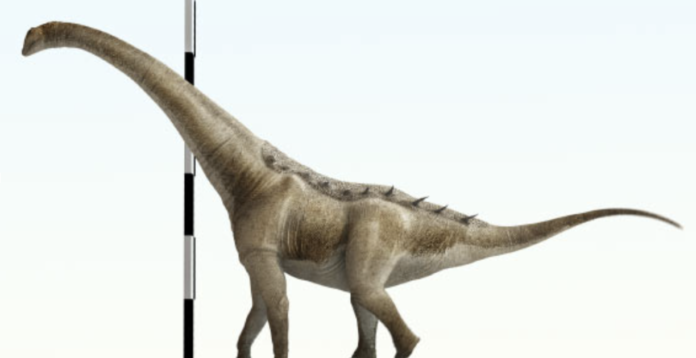By Jessica Park
Great news for dinosaur enthusiasts! Paleontologists have recently announced the discovery of a new species of titanosaur in Spain. The fossils were found at the Lo Hueco fossil site, located near Cuenca, a mountainous town in central Spain. This discovery happened during an excavation for a high-speed train line between Madrid and Valencia. During the construction, workers unexpectedly dug up ancient skeletons of various animals, including dinosaurs, crocodiles, and turtles. The new dinosaur’s name, Qunkasaura pintiquiniestra, was inspired by the town of Cuenca, a Spanish painter named Antonio Saura, and Queen Pintiquiniestra, a character from a 16th-century book mentioned in “Don Quixote,” a famous novel from the 1600s.
According to Pedro Mocho, a paleontologist at the University of Lisbon, this dinosaur is a type of titanosaur, a subgroup of sauropods. Sauropods are easily recognized by their very long necks and tails, small heads, and large, thick legs that look like columns. These plant-eating giants were some of the largest animals to ever walk the Earth. Within this group, titanosauruses are the only sauropods that had armor-like structures called osteoderms on their skin. Osteoderms are bony plates or lumps that provide extra protection, similar to the way some modern reptiles like crocodiles have rough, bumpy skin.
Qunkasaura pintiquiniestra stands out among other titanosaurs due to its bones. Its neck bones have special bony projections that are not found in other dinosaurs. It also has a hook-shaped bone at the base of its spine. Curiously, its tail has a characteristic found in a group of titanosaurs from South America, suggesting a possible case of convergent evolution, where similar traits evolve in unrelated species.
Why is this discovery important? The discovery of Qunkasaura pintiquiniestra is significant because it adds to our understanding of dinosaur evolution in Europe during the Late Cretaceous period. At that time, Europe was made up of many small islands, creating an insular environment where dinosaurs often evolved to be smaller due to limited space and resources. Interestingly, Qunkasaura pintiquiniestra was a medium to large-sized dinosaur, which is unusual for animals living in such confined areas. Researchers are currently exploring whether its ancestors came from Asia or North America.
In addition, this discovery not only helps scientists learn more about Europe’s ancient ecosystems 70 to 75 million years ago, but it also challenges what we know about how dinosaurs evolved and adapted to their surroundings. The presence of a large dinosaur in an environment where most animals were smaller due to isolation is surprising and suggests there is still much to learn.
But what other secrets might still be hidden beneath the earth at Lo Hueco? Could there be even more unknown species waiting to be found? Researchers believe they may not only identify more species from the fossils already collected, but could also uncover more skeletons if further excavations take place. As Pedro Mocho put it, “We don’t know exactly how many bones we still have over there, but we still have some remains to collect.” This discovery not only highlights the rich prehistoric past of Europe but also shows that there is still so much to learn about the fascinating world of dinosaurs! Let’s keep an eye out for more updates as scientists continue their explorations at Lo Hueco.

